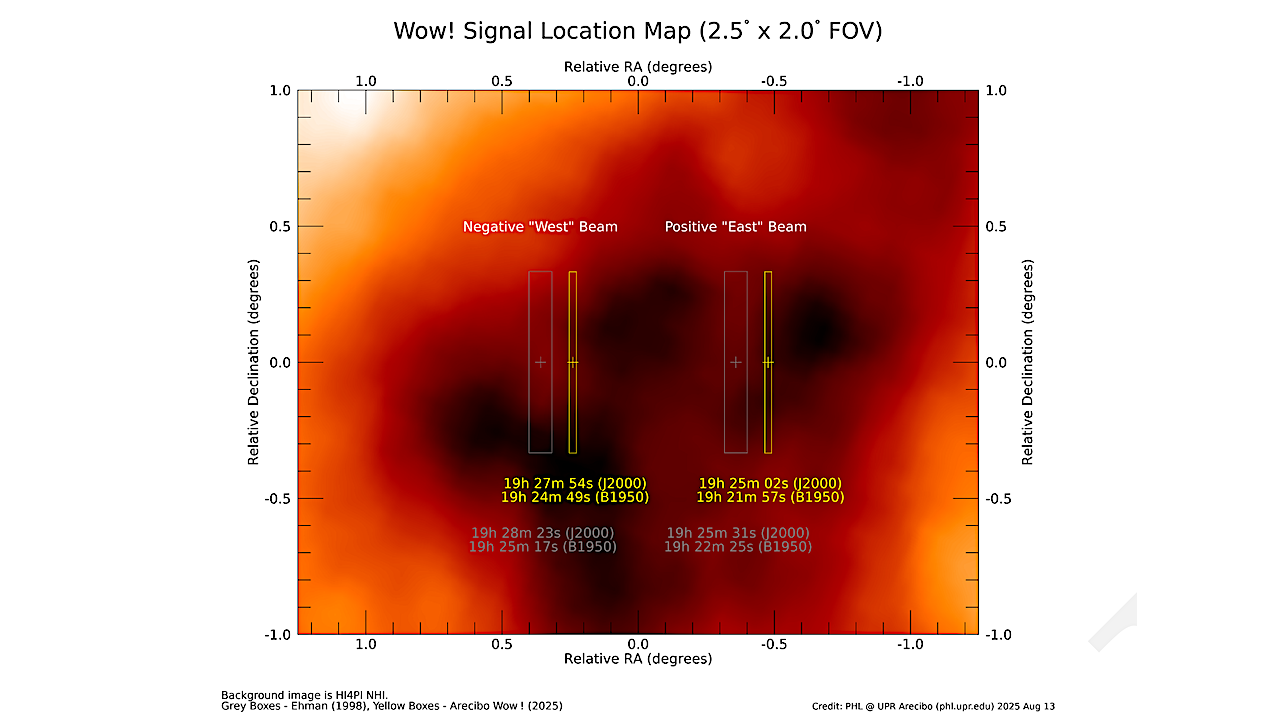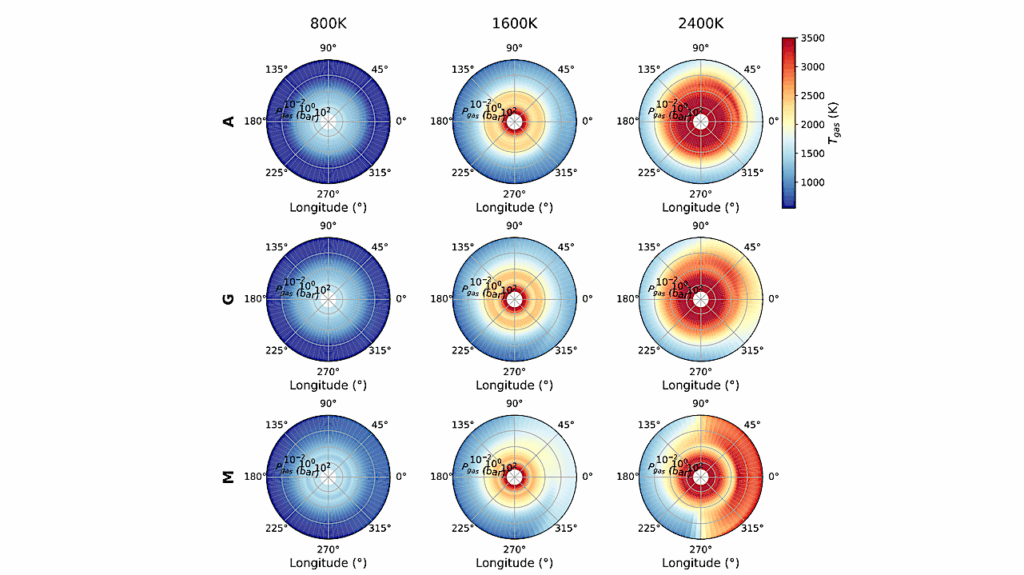Arecibo Wow! II: Revised Properties Of The Wow! Signal From Archival Ohio SETI Data

The Wow! Signal, detected in 1977 by the Ohio State University SETI project, remains one of the most intriguing unexplained radio transients. The most recent significant revision of its properties took place in the late 1990s; however, further advances were limited by readily available data from this event.
Here we retrieved and analyzed decades of previously unpublished Ohio SETI observations, enabling the most comprehensive re-evaluation of the properties of the Wow! Signal to date with modern methods. Our results reveal significant revisions to its parameters that may help explain why its source has been so difficult to identify.
We refine its potential origin to two adjacent fields centered on the right ascension α=19h25m02s±3s or 19h27m55s±3s, and the declination δ=−26∘57′±20′ (J2000), a location both narrower and slightly displaced from earlier estimates. We measure a higher peak flux density exceeding 250 Jy and a frequency of 1420.726±0.005 MHz, implying a galactic source with a substantially higher radial velocity than previously assumed.
Our analysis provides additional support for the hypothesis that the Wow! Signal most likely had an astrophysical origin rather than being attributed to radio interference. In particular, we confirm that small, cold HI clouds can produce narrowband signals similar to its detection, which might suggest a common origin.
These findings provide the most precise constraints to date on the location, intensity, and frequency of the Wow! Signal and offer a new path to identify its origin.
Abel Méndez, Kevin N. Ortiz Ceballos, Jorge I. Zuluaga, Kelby D. Palencia-Torres, Allison J. Smith, Alondra Cardona Rodríguez, Héctor Socas-Navarro, David Kipping, Hodari-Sadiki Hubbard-James, Mai Le, Alejandro Rincón-Torres

Examples of two narrowband signals in the Ohio SETI data from January 1978, designated Wow2 (top frame) and Wow3 (bottom frame). These signals are similar to the Wow! Signal, albeit at a considerably reduced intensity, and in different locations. They were identified and circled here by the Ohio SETI team. — astro-ph.HE
Comments: To be submitted to ApJ after incorporating feedback
Subjects: High Energy Astrophysical Phenomena (astro-ph.HE); Astrophysics of Galaxies (astro-ph.GA); Solar and Stellar Astrophysics (astro-ph.SR)
Cite as: arXiv:2508.10657 [astro-ph.HE] (or arXiv:2508.10657v1 [astro-ph.HE] for this version)
https://doi.org/10.48550/arXiv.2508.10657
Focus to learn more
Submission history
From: Abel Mendez
[v1] Thu, 14 Aug 2025 13:58:48 UTC (3,669 KB)
https://arxiv.org/abs/2508.10657
Astrobiology, SETI, Astronomy, Technosignature,








